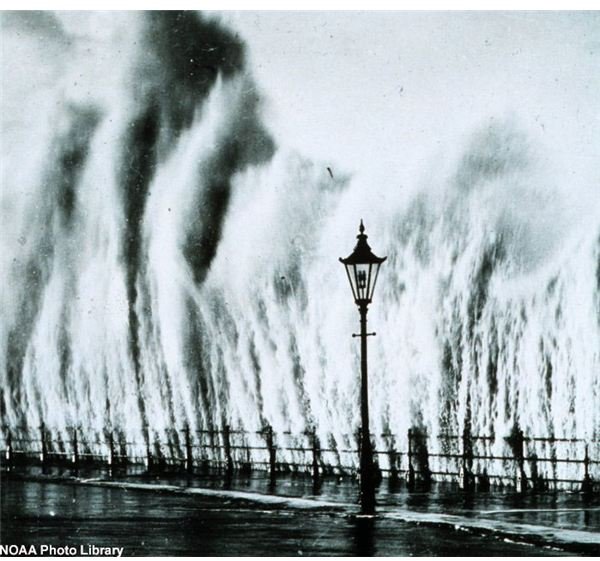Unsolved Mysteries of the World - Freak Giant Rogue Waves
We started talking about the physics of rogue waves in our previous article and will continue the discussion here. The old, linear models of hydrodynamics neither account for nor predict the existence of monster waves.
The theory that they are just combinations or superpositions of small ones that form during storms does not explain their sudden appearance in calm waters, for example. Physicists, mathematicians, engineers, and oceanographers now have several different newer models to explain their existence.
NOAA once had a program where rogue waves were studied in great detail. Researchers there found that the lack of predictability happens due to the fact that most measurements are based on ocean wave models as stationary random Gaussian processes. A stationary process has a probability distribution which is the same for all times and all positions. A Gaussian process has a probability of occurrence that is based on the Gaussian or normal distribution, also known as a “bell curve”. The NOAA researchers studied rogue wave data at various places around the world and proposed different non-linear models.
Current Research
What follows is an overview of current day research into the science of extreme waves.
-
Nonlinear Models: Researchers at the University of Massachusetts believe that sea-floor topography, near surface currents, and the wind are a major factor in their genesis. They have constructed several nonlinear models which they use as the basis for numerical simulations.
-
Neural Networks: At Texas A&M, researchers have found a mathematical model, based on neural networks and data from buoys, that is able to make predictions of wave heights off the coast of the United States for up to 24 hours. This model is used in coastal areas of Maine and Texas, and also in Alabama.
-
Schrödinger’s equation: This is used in quantum physics to explain the behavior of atoms and particles. Norway researchers have successfully used the nonlinear version to model the physical characteristics and sudden appearance of monster waves.
-
Optics: Some researchers are studying optics to come up with viable models. At UCLA’s Henry Samueli School of Engineering and Applied Science, they have developed experiments and mathematical models for optical rogue waves that they believe are applicable to hydrodynamics. Their work also uses the nonlinear Schrödinger equation as a basis. Optical rogue waves are easier to create experimentally and detect than their ocean counterparts.
In the next part of this series, we will examine monster waves and naval architecture.
References
University of Massachusetts Article
Image Resources
NOAA photo from LiveScience.com
Resources
A Rogue Wave Hits A Group of Scientists Near Scotland
Rogue Wave Discussion at the University of Oslo, with simulations and photos and resources
